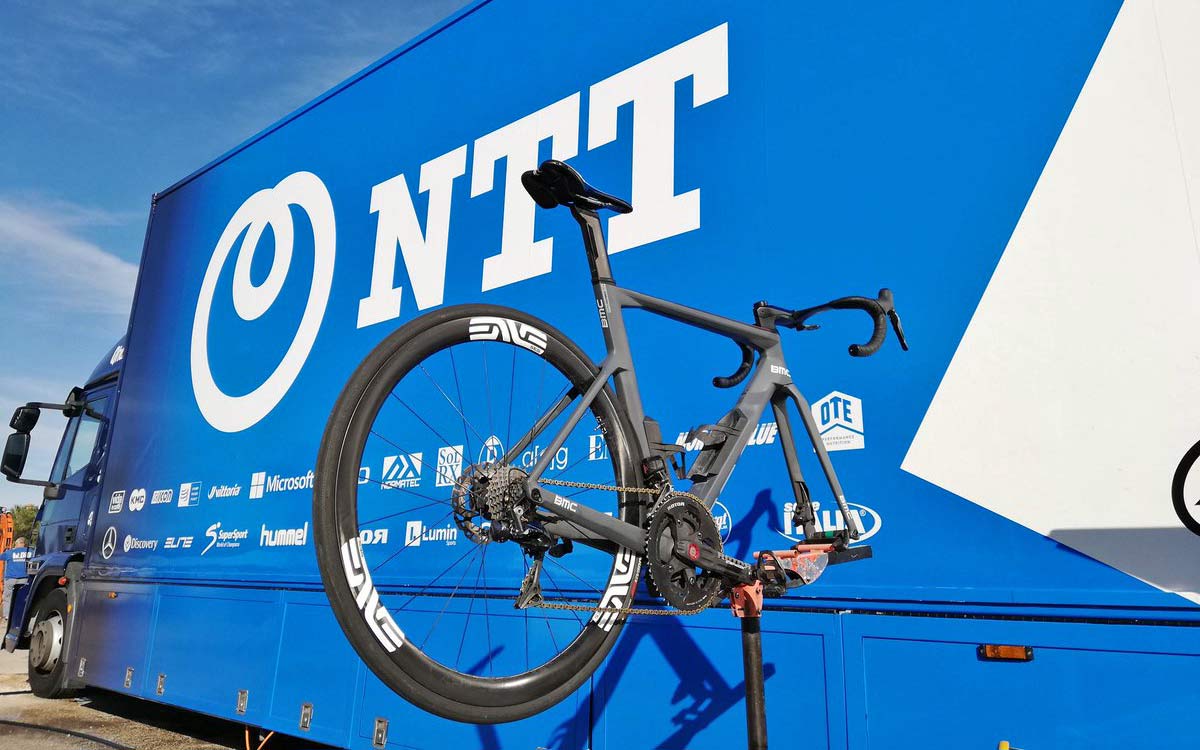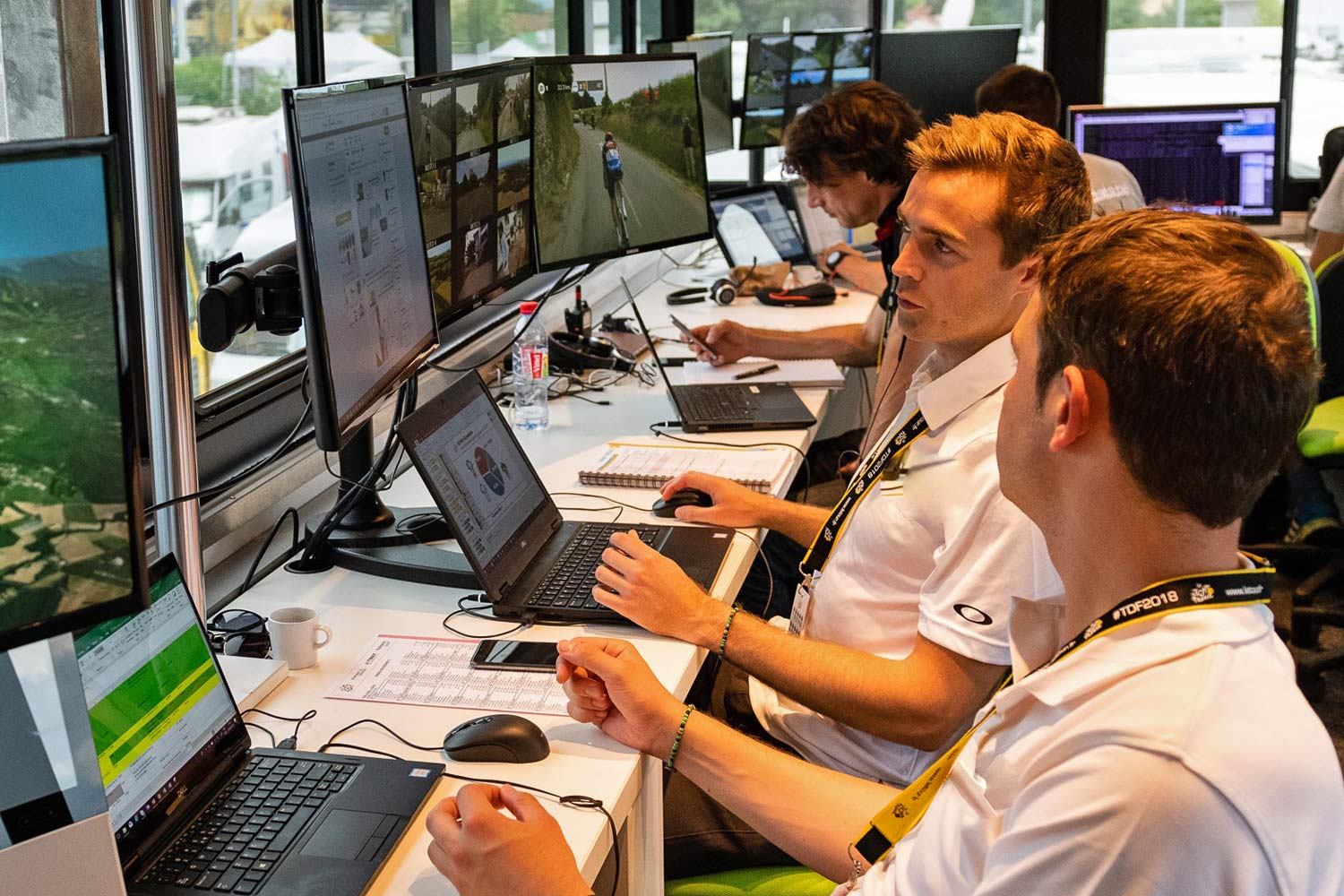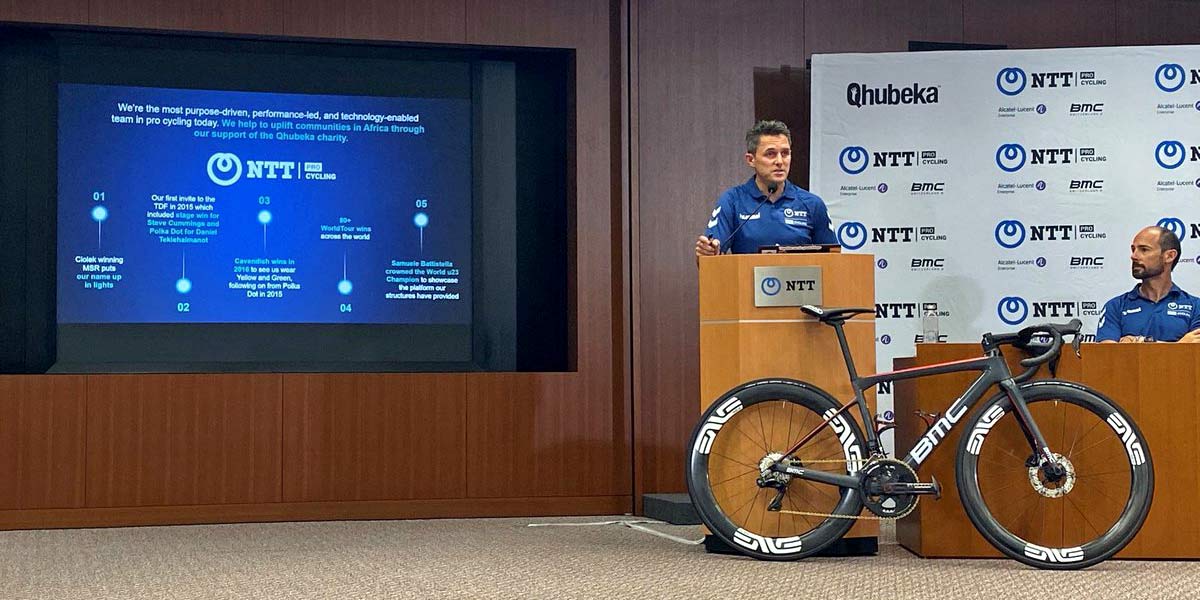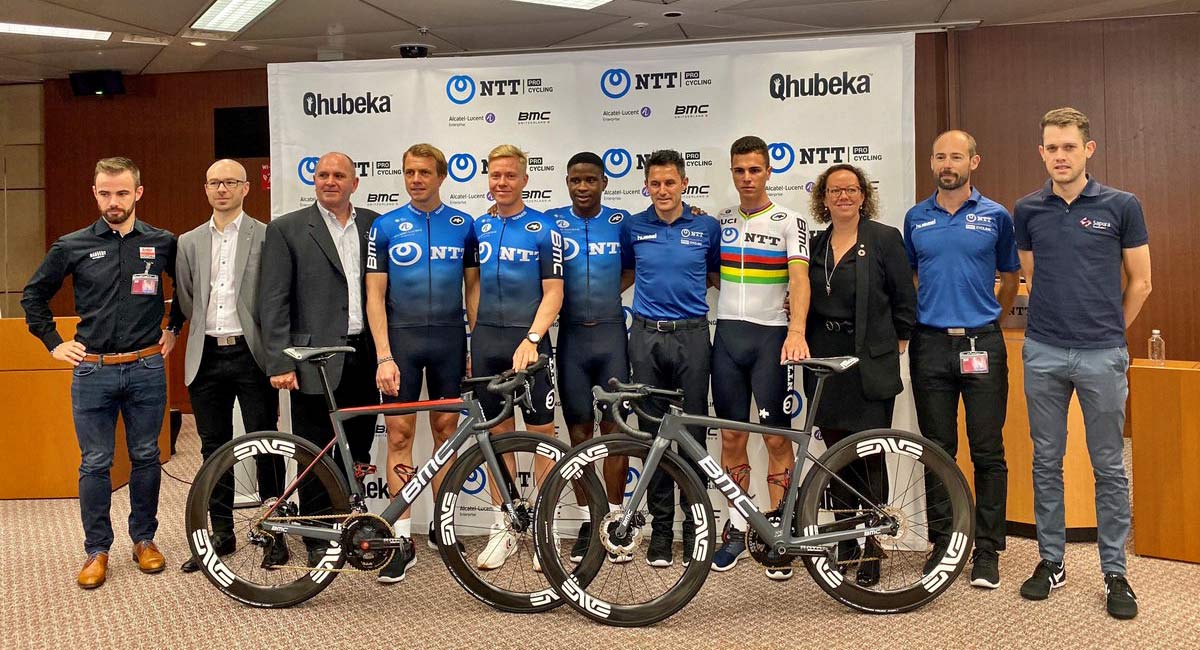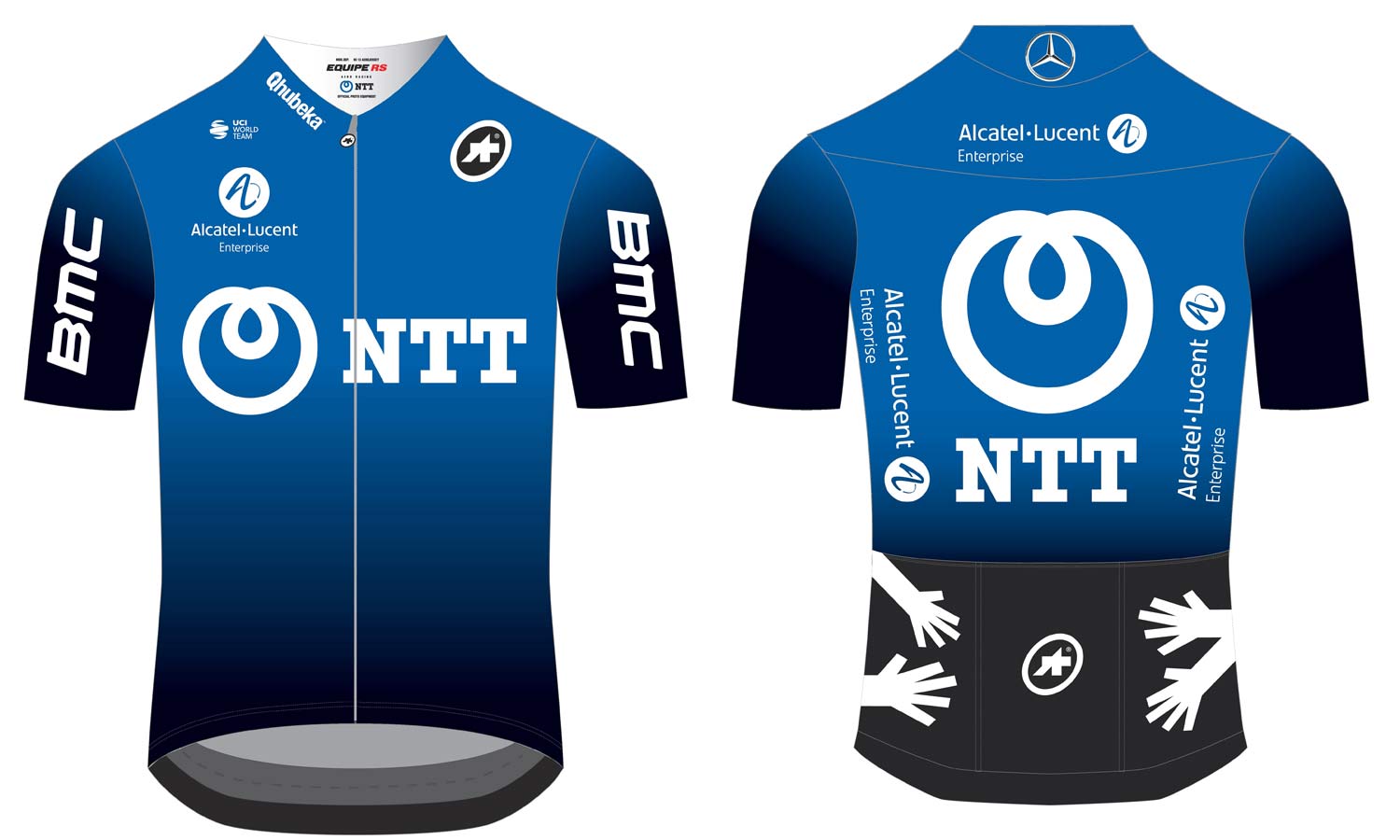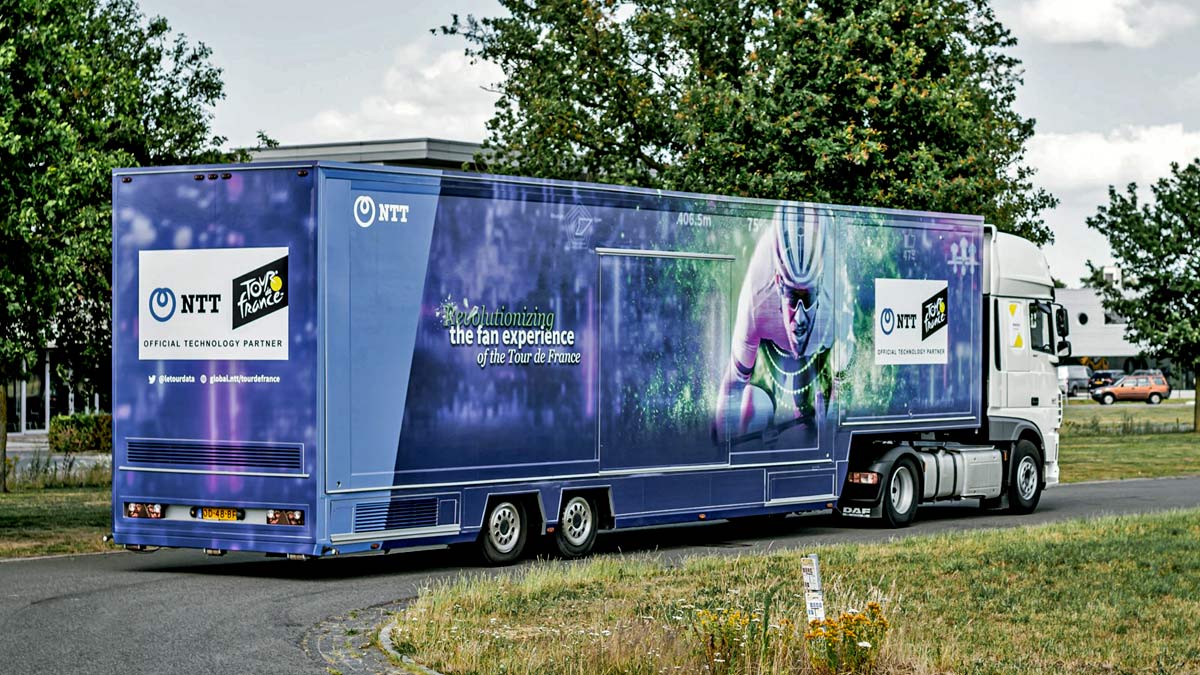When the Dimension Data team got rebranded as NTT Pro Cycling, we heard that NTT was combining artificial intelligence, machine learning & data analytics to “take pro cycling and the fan experience to a whole new level”. Pro racer news isn’t really our thing, but that piqued our interest. So how was AI & big data really going to change professional cycling, especially how to run a pro team? We wanted to learn more, so I got in touch with two of the most influential people involved in NTT cycling to get it straight from the source…
NTT Pro Cycling, a smarter pro team through big data analytics
To get the real lowdown on how NTT was working to revolutionize cycling, I spoke with Peter Gray – the senior VP of NTT Ltd’s Advanced Technology Group on sports – and Dr. Daniel Green – NTT’s head of Performance Innovation and the head coach of the NTT Pro Cycling. These two guys broke down what it meant for big data to improve the professional cycling experience and how data analytics was creating an innovative way to run a pro cycling team.
Finding new riders for the team, with data
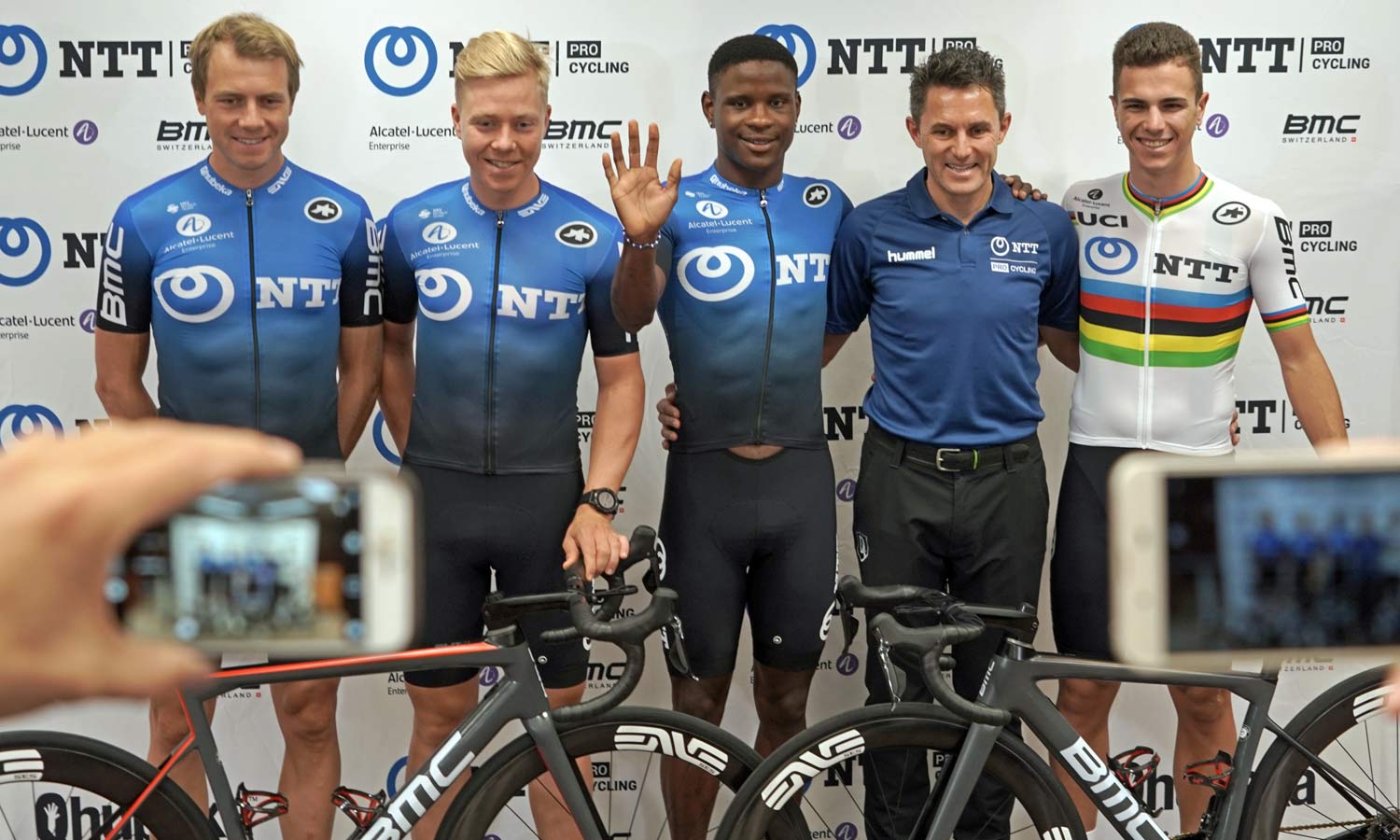
Dr. Green first started off with how they used data analytics to select the best riders for the team. Even though NTT Pro Cycling is a new name, there’s a lot of history from the Dimension Data days, and data has always been core to the team. Now as it came down to it, NTT was looking to build a complete team of pro riders. And without a giant budget for big salaries, they needed to optimize their team when most of the riders were only signing one year racing contracts. So they started mining data.
With a goal of targeting UCI points & potential wins, NTT created a clustering model that analyzed the key attributes of past UCI riders & race winners, and compared that to the same data collected from current riders. The machine learning or artificial intelligence was to find patterns in the data to predict future results. And of course that needed lots of data.
NTT says they continue to broaden their data set, working with all publicly available race results, race point rankings, current rider profiles & other performance data points. The more data they collect, the better predictions their AI can make, and the better it can group together riders with similar characteristics and potential.
The NTT Pro Cycling data analysis team is specifically looking to identify & highlight rider talent that may have already been overlooked giving them an advantage, so they’ve been digging through results from between 3-4000 UCI sanctioned events this year to select their 2020 team.
Using data collection & analysis to optimize rider training
The data analysis doesn’t stop when riders are selected. Of course we’ve seen almost every team (even down into amateur ranks) collecting rider performance & race data – from basic heartrate and power, to more advanced VO2 max & more metrics.
But NTT expands that even more, tracking riders 24 hours a day to see how their heartrates trend, how nutrition & hydration levels impact rider performance and recovery. Its more about collecting a more complete data set to truly monitor the health & well-being of all of the riders on the team. The team is constantly working on developing new technologies & solutions off-the-bike, so their riders are race-ready on-the-bike.
Cycling’s own Moneyball, NTT calls it Moneywheel
In the end, NTT (as under the Dimension Data guise before them) takes full advantage of the data processing power of their title sponsor, one of the world’s largest data analytics & machine learning companies. They continue to refine their own art of winning a game with way more data points than most fans or even athletes really appreciate.
AI picks the riders. Machine learning will help shape their training plans. And AI will pick out the best races for each rider’s talents & potential. NTT call it Moneywheel.
NTT Pro Cycling crunched the numbers and identified nine new riders to join the roster in 2020. Every one was identified by the AI data analytics, singled out for having an upward trajectory in their potential to score UCI points. The NTT analysis targeted riders close to or in the prime of point scoring potential in their career – often riders 26-28 years old. Each new rider was signed on a one year deal, hoping to build the groundwork for continuation in the next season assuming sponsor funding is secured.
A highlight of the 2020 signings…30-year-old Australian rider Ben Dyball was being overlooked by major teams. Yet, even though he was racing on the Continental level, he was ranked in the top 100 in UCI points. The UCI put him just two spots behind Niki Terpstra, three behind Mads Pedersen who became the new World Champion, and higher than other well-known riders like Warren Barguil & Simon Yates. Dr. Green’s point was that there is a lot of rider potential lying hidden in lesser known riders, and the NTT Team’s Moneywheel data analysis presents great opportunity to develop a successful team.
What’s next for NTT number crunching?
Big NTT data isn’t only about changing how a professional cycling team is run, they are also continuing to refine how they collect, analyze & re-share that data to create a better cycling fan experience. I dove into the cycling spectator side of the equation with NTT as well, a big part of that linked to their long-standing A.S.O. / Tour de France partnership, but that’s another deep topic for another day.
